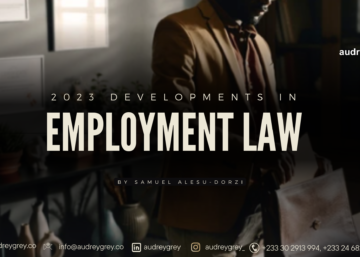Things to Know About the Corporate Insolvency and Restructuring Act (3)
In April 2020, the Corporate Insolvency and Restructuring Act, 2020 came into force. Since then, I have been throwing some insight into the architecture and workings of the Act. The ultimate aim behind these write-ups is to throw light how the Act may be of help to companies in distress. So, in this piece, I will continue to set out some of the things that the public ought to know about the Corporate Insolvency and Restructuring Act. Last week we spoke about the main vehicles available to help troubled companies survive in the midst of a crisis.
We have already discussed the fact that once a person opts to go into administration or insolvency, the rights of creditors against the company immediately come to a halt.
Typically this is the fate of distressed companies: Suppliers are unwilling to supply credit; Banks and financial institutions don’t even want to hear their names much less advance more finance; Employee obligations are outstanding…. So it’s fair to say that by this point, the company may have exhausted all of its goodwill with suppliers, creditors, financiers, employees and basically everyone. Now with such a dire situation, how is an administrator to proceed?
Let’s refresh our memory on the role of the administrator. The administrator takes over the role of the directors and manages the company to steer it from a point of near collapse back to life. The challenge for many administrators would be regaining the trust of suppliers and other stakeholders. In the absence of such trust, it is almost impossible for an administrator to turn the fortunes of the company around. The administrator may have to convince suppliers to continue trading with the company. The administrator may have to renegotiate credit and debtor terms, and of course the elephant in the room – access to liquidity or cash to run the business while the administrator puts things in place to place the company back on its feet. Banks, savings and loans companies, microfinance institutions and high net worth individuals who are in a position to offer financing would most likely not invest in a company which is plagued by financial difficulties, lack of collateral, and ‘bad PR’.
The Corporate Insolvency and Restructuring Act caters for such a scenario by introducing what the Act calls “post-commencement financing”. So, what is post-commencement financing? It may sound like a big word. But it becomes easy when you take it in small chunks. So here are the keywords: “post-commencement” and “financing”. When we say “post-commencement”, what exactly do we mean? In ordinary conversation, “post-commencement” simply refers to an “event after something has begun”. The relevant event under discussion here is insolvency or administration. So “post-commencement financing” simply refers to the financing of the activities of a distressed company after it has been placed in administration. Some industry persons call it turn around finance.
Post commencement financing, therefore, comprises monies borrowed or obtained by the administrator to enable the distressed company to carry on its activities and turn its fortunes around. These borrowed monies could be bank loans, trade financing, venture capital financing, or any other financing obtained by an insolvency practitioner to enable her to carry out the job of restructuring the company to ensure viability.
The truth of the matter is that in most cases, you would need money to help move the administration along. Lenders would mostly be unwilling to put cash into a company in administration because the likelihood of recouping those funds would range from zero to none. Post commencement financing is, therefore, a revolutionary addition to our law that allows lenders to lend money to companies in administration without fear of an inability to recoup the funds.
So, the big questions are: What is in for a person who invests in such a risky venture? Are there guarantees in the law that ensures that a person who invests in a company in such a bad time has something to hold on to? The plain answer to the question is “Yes!” Post-commencement financings are ranked as Class A priority debt. This means that they rank above all other creditor claims including government debts to the revenue authorities, secured creditors, and preferential creditors. This further means that sums of money advanced as post-commencement financing would be paid in full before all other creditor claims. Banks, financial institutions and other lenders who would give loans to insolvency practitioners to carry out an administration are ensured to completely recover their money and interest in full before any other debt is paid out to anyone else the company owes.



